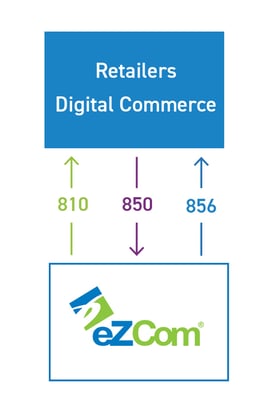A High-Level Overview of Electronic Data Interchange
How does EDI (or, electronic data interchange) work?
Good question. There’s a short answer and a long answer. And since everyone is tight on time these days, let’s start with the short…
EDI is the electronic communication of business documents such as purchase orders, confirmations, invoices, shipping updates, and more, between suppliers and retailers. Each document is associated with a three digit code.*
Before we dive deeper into how EDI works, first check out our What is EDI? primer.
Some retailers will require numerous EDI documents. Others will only utilize a few. It all depends on each retailer’s compliance standards.
But one thing is for sure: When a supplier is compliant with a retailer’s EDI requirements, both parties are saving time and money. Everyone’s happy.
Here’s how they get there.
It’s helpful to think of EDI in three steps: Preparation, Translation, Transmission. It’s also helpful to use an example with just a single document. Let’s go with the EDI 850, otherwise known as the purchase order.
A retailer will prepare an 850, gathering key pieces of data including PO number, order number, desired delivery date, supplier details, shipping terms, item identifiers, prices and payment terms and more.
An EDI platform like Lingo then translates the raw 850 data, converting it into a human readable format that the recipient (in this case, the supplier) can understand.
From there, it’s all about document transmission. Again, an EDI platform like Lingo handles pushing the 850 to the supplier.
This flow works the same in reverse, from supplier to retailer, for documents like the 855 (purchase order acknowledgement), the 856 (advanced shipping notice), and the 810 (invoice).

But here’s the thing: with the right EDI platform in place, the right customizations and automations and the right support, you’ll spend very little time under the hood. To learn more about eZCom and our award-winning EDI platform, Lingo, give us a call at 201-731-1800 or email us at sales@ezcomsoftware.com.
*EDI codes are three digits under X12 standards, which are generally used and adhered to in the United States / North America. EDI codes are six characters under EDIFACT standards, which are most used in Europe, Asia, South America, and Oceania. To illustrate, under X12 standards, an invoice is 810. Under EDIFACT standards, an invoice is “INVOIC.”






